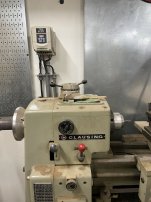swarfie
Plastic
- Joined
- Feb 25, 2023
- Location
- Boston area
I just bought a Clausing 5914 lathe. I would like to get it up and running, but I only have single phase power at my house. I want to use the vs drive as is. What should I go with for a phase converter? I’m not really keen on a rpc, due to cost and noise. If I use a vfd, can I just use it for a straight phase converter, i.e. just send the 3 phase to the machine and use as is? Or do I need to use it to control forward, reverse and braking? How about a static phase converter? Or something like this:
https://www.amazon.com/Single-Conve...mzn1.fos.f5122f16-c3e8-4386-bf32-63e904010ad0.
I know this has been beaten to death, but I am having a hard time finding a direct response in the postings.
Thanks all!
https://www.amazon.com/Single-Conve...mzn1.fos.f5122f16-c3e8-4386-bf32-63e904010ad0.
I know this has been beaten to death, but I am having a hard time finding a direct response in the postings.
Thanks all!




